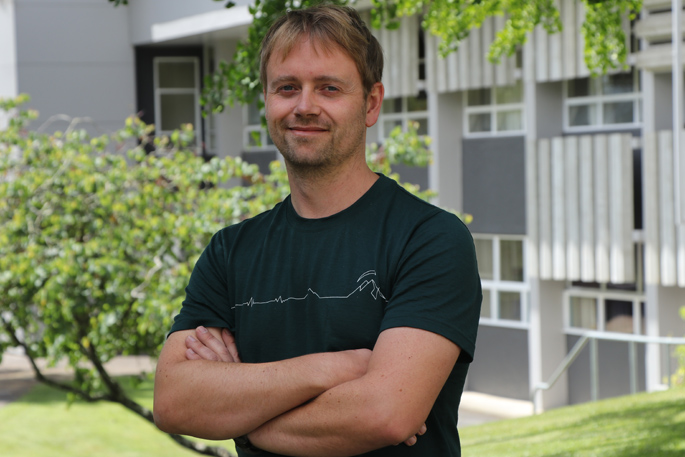Senior lecturer of geochemistry at the University of Waikato, Dr Adam Hartland has recently been awarded a Ministry of Business Innovation and Enterprise Smart Ideas grant of just under $1m to complete a two-year project investigating the leaching potential of cadmium in soils from across the region.
Adam, who holds a BSc (Hons), PhD Birmingham, is leading an international team of researchers in conjunction with Lincoln and Otago universities, and will be working principally in the Waikato/Bay of Plenty regions, and on a smaller scale in Taranaki and Canterbury.
“The ash soils of the Waikato/Bay of Plenty region have one of the highest cadmium contamination levels in the country, so we are concentrating our research in these areas,” says Adam.
Cadmium is a toxic and bio-accumulative metal. Research has already established that it passes from soil into pasture, which is eaten by animals, and a low level enters the human food chain.
“Waikato Regional Council has been measuring cadmium levels in soils for decades, as high contamination could potentially lead to land use issues,” says Adam.
While there is a small amount of natural cadmium in soil, application of phosphate fertilisers causes weathered ash soils to bind phosphorus, which attracts cadmium, causing accumulation over time.
Adam says research has discovered that although high, cadmium levels have begun to plateau across the region – and it is this process that he will be investigating.
“The soils are well below their cadmium-carrying capacities, and we’re applying a lower rate of phosphate, so where is the cadmium going?
“We’re testing theories that it either leaches into the ground water, has a higher uptake into plants and animals, or is washed away with topsoil due to the high soil erosion rates.”
Testing will occur both out in the field, and back in the labs, using a technique called stable isotope analysis, which uses two stable cadmium isotopes, Cd-110 and Cd-114.
Cd-114 is more enriched in soils treated with phosphate fertilisers. This difference allows the research team to determine the source of any cadmium found in samples.
For the first year the team will test groundwater, lakes and rivers in catchments of both pastoral and native bush land. The Lincoln team will perform leaching experiments with Waikato, Taranaki and Canterbury soils.
During the second year, the investigation will measure levels in aquatic organisms, fingerprinting the cadmium that’s present, and whether it is an issue for our aquatic ecosystems.
The findings will be published for the benefit of the public, iwi, industry and regulators as a whole, and data will also be used to upgrade the existing NZ industry tool for managing cadmium, CadBal.



0 Comments
Leave a Comment